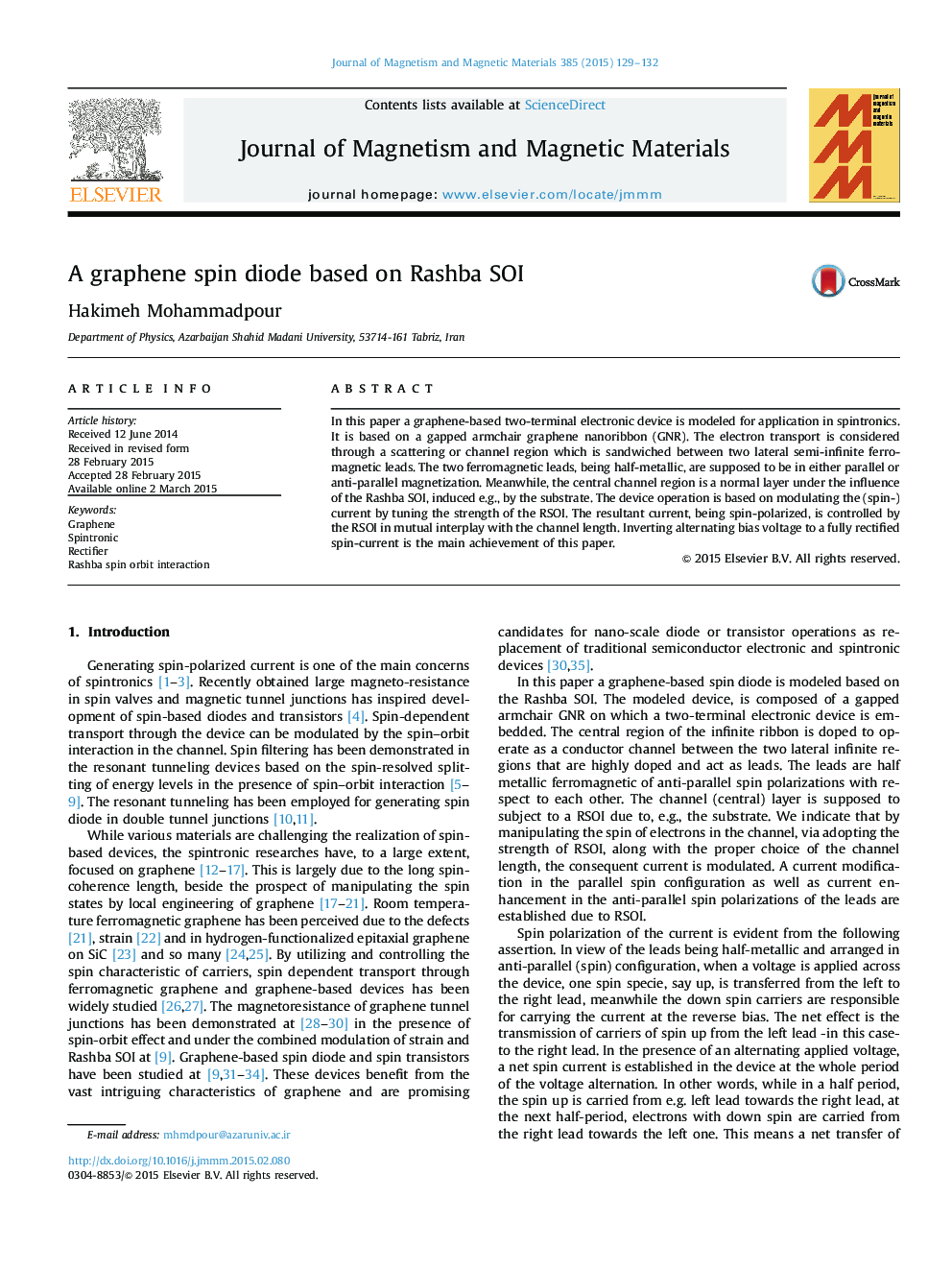| Article ID | Journal | Published Year | Pages | File Type |
|---|---|---|---|---|
| 1799130 | Journal of Magnetism and Magnetic Materials | 2015 | 4 Pages |
•Graphene-based electronic device is modeled with ferromagnetic leads.•The device operation is based on modulating the (spin-) current by Rashba SOI.•Inverting alternating bias voltage to rectified spin-current is the main achievement.
In this paper a graphene-based two-terminal electronic device is modeled for application in spintronics. It is based on a gapped armchair graphene nanoribbon (GNR). The electron transport is considered through a scattering or channel region which is sandwiched between two lateral semi-infinite ferromagnetic leads. The two ferromagnetic leads, being half-metallic, are supposed to be in either parallel or anti-parallel magnetization. Meanwhile, the central channel region is a normal layer under the influence of the Rashba SOI, induced e.g., by the substrate. The device operation is based on modulating the (spin-) current by tuning the strength of the RSOI. The resultant current, being spin-polarized, is controlled by the RSOI in mutual interplay with the channel length. Inverting alternating bias voltage to a fully rectified spin-current is the main achievement of this paper.
